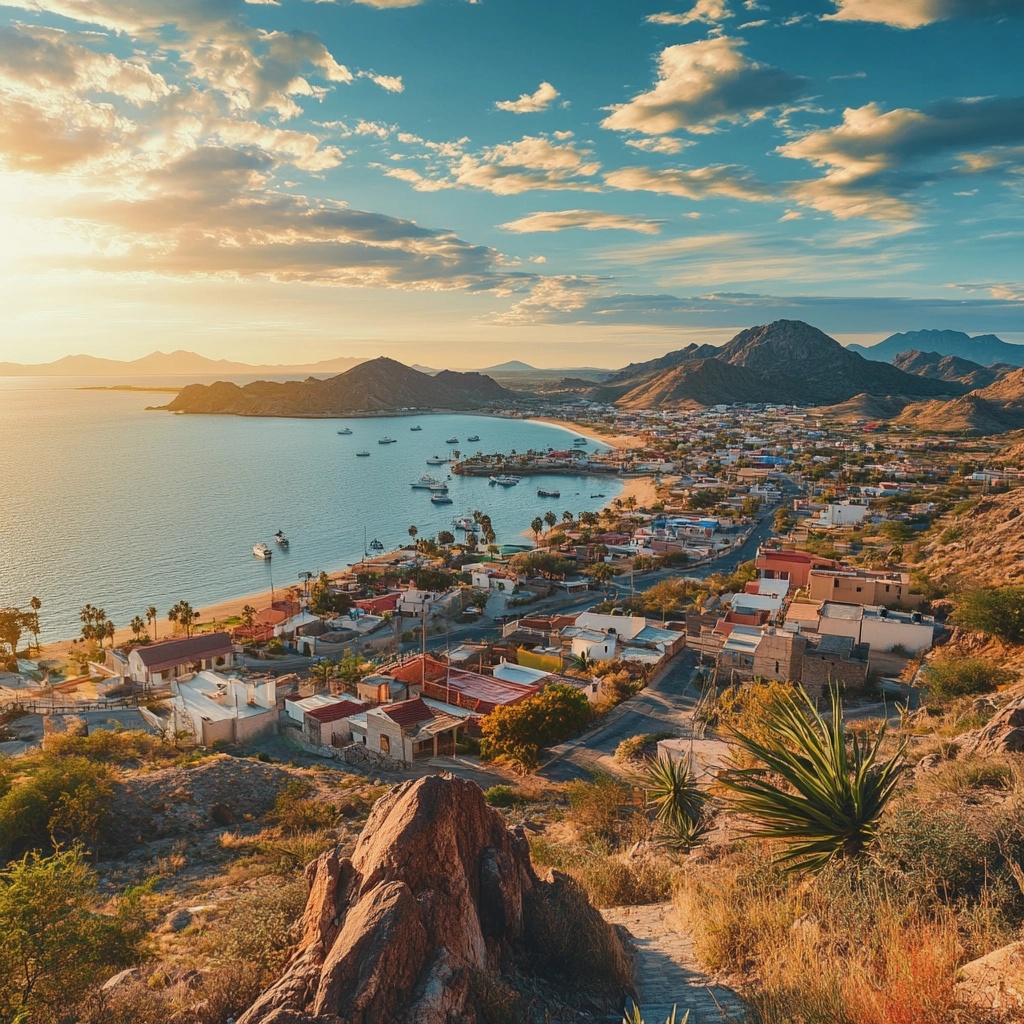
Sonora: Unveiling History, Culture, and Cuisine of Mexico

Welcome to "Sonora: Unveiling History, Culture, and Cuisine of Mexico." This article aims to explore the richness and diversity of Sonora, a state that embodies the essence of northern Mexico. Known for its stunning landscapes and vibrant culture, Sonora is a blend of historical significance, unique traditions, and culinary delights that reflect its storied past and present. With its strategic location bordered by the United States and diverse ecosystems, it serves as a melting pot of influences, both local and foreign.
In our journey through Sonora, we will delve into the fascinating historical significance of the region, its cultural heritage that resonates through various traditions and customs, and the mouth-watering cuisine that defines its identity. As we unveil the distinct characteristics of Sonora, we will provide a comprehensive overview of its geography, major cities, economic landscape, and ecological diversity, thereby painting a complete picture of this remarkable state.
Geographical Overview of Sonora
Sonora is located in the northwestern part of Mexico and spans an impressive area of approximately 70,291 square miles. It is bordered by the United States to the north, specifically Arizona, and shares boundaries with the Mexican states of Chihuahua, Sinaloa, and Baja California. The terrain is primarily characterized by the Sonoran Desert, which is one of the largest and most biodiverse deserts in North America. Despite its arid and harsh climate conditions, the desert hosts an extraordinary variety of flora and fauna, making it a vital ecological hotspot.
Within its borders, Sonora features a diverse geography that includes mountainous regions, valleys, and rivers. The Sierra Madre Occidental mountain range runs through the state, contributing to its stunning landscapes and providing a backdrop for many of the towns and cities. These geographical features not only enhance the beauty of Sonora but also influence its climate, crops, and lifestyle of its inhabitants.
Climate and Ecosystem
The climate in Sonora varies significantly across different regions due to its diverse topography. In general, the state experiences a dry, desert-like climate in most areas, with hot summers and mild winters. The coastal regions, particularly along the Gulf of California, have a more humid climate, which supports lush marine ecosystems. Sonora's ecosystems are home to over 1,500 plant species, 350 types of birds, numerous mammals, and diverse reptiles and amphibians. Notable natural reserves include the UNESCO-designated Bay and Islands of San Jorge, a prominent area for conservation efforts.
Historical Significance and Contributions
Sonora holds immense historical significance that dates back to pre-Columbian times when various indigenous groups inhabited the region, including the Yaqui, Mayo, and Seri peoples. The state played a crucial role in the history of Mexico, particularly during the Spanish colonization and later during the Mexican Revolution. It became a hotbed for revolutionary activity, producing notable figures such as Álvaro Obregón and Plutarco Elías Calles, who would go on to lead the nation.
Throughout its history, Sonora has been a vital center for mining, particularly during the silver mining boom of the 18th and 19th centuries. Gold and copper mining industries thrived, contributing substantially to the state’s economy and infrastructure development. The influence of mining still reverberates through modern Sonora, where it remains one of the primary economic activities in the region.
Legacy of Indigenous Cultures
The legacy of indigenous cultures is prominent throughout Sonora, with archaeological sites and artifacts scattered across the landscape. These ancient societies contributed to the rich tapestry of Sonoran history, with their languages, arts, and traditions still evident in contemporary life. Celebrations and rituals often pay homage to this heritage, ensuring that the stories of the past continue to shape the identity of Sonora today.
Cultural Heritage and Traditions
Sonora's cultural heritage is a vibrant mix of indigenous traditions and Spanish influences, creating a unique identity that sets it apart from other Mexican states. One such influence is the longstanding tradition of mariachi music, which originated from this region, making it a source of pride for Sonorans. The rhythms and melodies characteristic of Sonoran music can be heard during festivities and celebrations, serving as a joyful reflection of the local spirit.
Festivals are an integral part of Sonora's culture, showcasing the state's lively traditions and communal spirit. The annual fiestas across various towns include religious celebrations, fairs, and sporting events, further uniting the people in shared experiences. Notable events such as the Fiesta del Sol and Fiesta de la Vendimia celebrate local heritage through food, music, and dance, highlighting the importance of cultural preservation.
Arts and Crafts
The artisans of Sonora are skilled in various crafts, producing exquisite handmade goods that reflect the state's culture and history. Traditional crafts include pottery, weaving, and silver jewelry, with many artisans trained in these age-old techniques passed down through generations. Shopping for these unique pieces of art not only supports local economies but also allows visitors to take a piece of Sonora's rich cultural heritage home with them.
Culinary Delights: A Taste of Sonora
Sonora's cuisine reflects the state's diverse geography and cultural influences, offering a rich and flavorful culinary experience. The region is known for its emphasis on grilled meats, particularly the popular dish of carne asada. This dish represents the heart of Sonoran barbecues, where locals gather to enjoy flavorful meats cooked to perfection. The accompanying sides often include roasted vegetables, beans, and tortillas, creating a comforting and satisfying meal.
Corn is a staple ingredient in Sonora's culinary repertoire, as seen in dishes such as tamales, tortillas, and enchiladas. Additionally, Sonora is famous for its unique twist on flour tortillas that are lighter, softer, and larger than those found in other regions. This culinary tradition has made Sonora a producer of high-quality flour tortillas that are enjoyed across Mexico and beyond.
Seafood and Local Ingredients
Given its proximity to the Gulf of California, Sonora boasts a vibrant seafood scene, making fish, shrimp, and scallops staples in local dishes. The fusion of ingredients from the land and sea leads to exciting dishes such as aguachile and ceviche, showcasing the region's rich marine resources. These flavors came together in a unique and diverse menu that captivates both locals and visitors alike.
Major Cities and Population Centers
Sonora is home to several major cities and population centers that serve as cultural and economic hubs for the state. The capital city, Hermosillo, is the largest urban area, known for its beautiful architecture, modern amenities, and vibrant nightlife. It showcases the fusion of tradition and modernity, making it a popular destination for both locals and tourists.
Other significant cities include Heroica Nogales, a border city that highlights the binational culture shared with the United States, and Ciudad Obregón, which plays a key role in agriculture and agribusiness. Guaymas, known for its picturesque coastal views and tourism, is another vital city in Sonora that reflects the state's importance in trade and commerce.
Population Demographics
As of 2020, Sonora has a population of nearly 2.9 million residents. The demographic composition is diverse, with a mix of indigenous peoples, mestizos, and immigrants contributing to the rich social tapestry of the state. The cultural implications of this diversity are evident in the festivities, culinary offerings, and social practices that define Sonorans' way of life.
Economic Landscape and Key Industries
Sonora's economy is characterized by its diverse economic landscape, which includes significant contributions from agriculture, mining, manufacturing, and tourism. The state is one of the largest agricultural producers in Mexico, with key crops such as wheat, corn, and cattle raised for consumption. The irrigated valleys are the lifeblood of agriculture in Sonora, supporting a thriving agribusiness sector.
Mining remains a pivotal industry, as Sonora is renowned for its copper production, along with other vital minerals. The state's rich mineral resources have attracted investments and propelled economic growth in the region. Additionally, manufacturing has flourished in response to international trade agreements such as NAFTA, leading to the establishment of several maquiladoras (factories) that produce goods for both domestic and foreign markets.
Challenges and Opportunities
Despite the strengths of its economic landscape, Sonora faces challenges such as water scarcity, environmental concerns, and economic inequality. Addressing these issues will require innovation and sustainable practices to secure a prosperous future for the state. However, the potential for growth remains significant, especially in sectors like technology and sustainable tourism that leverage the state’s historical and cultural offerings.
Ecological Diversity and Conservation Efforts
Sonora stands out for its remarkable ecological diversity, which includes numerous parks, reserves, and protected areas. These ecosystems contribute to the region's biodiversity and play a critical role in conservation efforts aimed at preserving native species and natural habitats. The state's commitment to conservation is exemplified by the establishment of reserves such as the Sonoran Desert National Monument and the El Pinacate Biosphere Reserve.
Efforts to protect the unique flora and fauna of Sonora include reforestation projects, sustainable land use practices, and wildlife conservation programs. Organizations and local governments are actively working to raise awareness about environmental issues, ensuring that both residents and visitors understand the importance of preserving Sonora's natural heritage.
Community Involvement and Education
Community involvement is essential to the success of conservation initiatives in Sonora. Local residents are encouraged to participate in programs that promote eco-tourism and sustainable practices, emphasizing the importance of protecting the environment for future generations. Educational programs in schools and community centers further enhance understanding of the significance of biodiversity and environmental stewardship.
Conclusion: The Essence of Sonora
Sonora is a captivating state that offers a unique blend of history, culture, and cuisine, making it a remarkable destination in Mexico. From its breathtaking landscapes and diverse ecosystems to its rich historical narratives and vibrant traditions, Sonora embodies the essence of northern Mexico. It is a place where ancient heritage coexists with modern advancements, and where the flavors of local cuisine tantalize the palate.
Exploring Sonora means embarking on a journey through time, where readers can appreciate the stories, tastes, and experiences that shape this extraordinary region. Whether you're drawn to its stunning natural beauty, intrigued by its historical significance, or eager to indulge in its culinary delights, Sonora promises to be an unforgettable destination that leaves a lasting impression. For those interested in learning more about Sonora, visit sonora.ai for insights and resources that celebrate this remarkable state.
Did you find this article helpful? Sonora: Unveiling History, Culture, and Cuisine of Mexico See more here Education.
Leave a Reply






Related posts